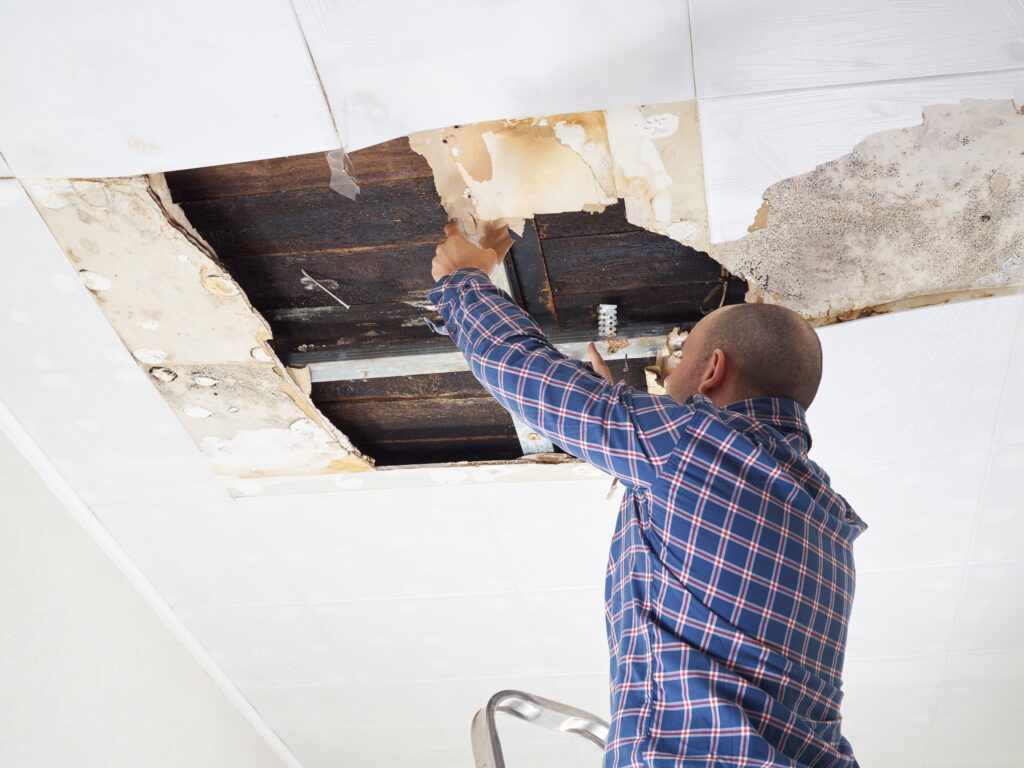Mold growth is a common problem for homeowners, and it can be a costly issue to deal with if not appropriately addressed. Homeowners insurance is designed to protect against many risks, but whether it covers mold damage is a question that often arises. Mold can result from various issues, such as water leaks, floods, or high humidity, and knowing whether homeowners insurance will help cover the cost of mold remediation or repairs can be crucial for homeowners. This article will explore whether homeowners insurance covers mold, the conditions under which it might be covered, and the steps homeowners can take to prevent mold damage.
What Is Mold, and How Does It Form?
Mold is a type of fungus that thrives in moist, warm environments. It can grow on various materials, including wood, drywall, carpeting, and insulation, and it can spread quickly once it takes hold. Common causes of mold growth include:
- Water Leaks: Leaks in the roof, plumbing, or appliances (such as dishwashers and refrigerators) can create a damp environment that fosters mold growth.
- Flooding: Floodwaters often cause water damage and create the perfect conditions for mold to thrive.
- High Humidity: Areas with poor ventilation or high humidity, like bathrooms and basements, are prime spots for mold to form.
- Condensation: When warm air meets cold surfaces, such as pipes or windows, condensation forms, leading to mold over time.
Mold can be more than just an aesthetic issue; it can cause significant health problems, especially for individuals with respiratory conditions, allergies, or weakened immune systems. For this reason, homeowners need to address mold promptly, whether through remediation or prevention.
Does Homeowners Insurance Cover Mold Damage?
Homeowners’ insurance typically covers many risks, including property damage from fires, storms, vandalism, and theft. However, mold damage coverage can be more complicated. Standard homeowners insurance policies usually do not cover mold damage unless a covered peril causes it. Here’s a breakdown of when mold damage might be covered and when it won’t be.
Mold Caused by a Covered Peril
Homeowners insurance generally covers mold damage caused by a sudden and accidental event, which is covered under the policy. Covered perils often include:
- Burst Pipes: If a pipe bursts due to freezing temperatures or an accident causing significant water damage that leads to mold growth, your homeowner’s insurance may cover the mold remediation costs.
- Firefighting Efforts: If your home experiences a fire and firefighters use water to extinguish the flames, the water damage can lead to mold growth. In this case, your policy might cover the mold damage.
- Storm Damage: If a storm causes water to enter your home through a broken window or roof, and mold subsequently grows due to moisture, this may be covered by your homeowner’s insurance.
- Accidental Water Damage: If a dishwasher or washing machine malfunctions and causes a water leak and mold forms, the damage may be covered under your insurance policy.
Suppose mold growth directly results from an event covered under your homeowner’s insurance. In that case, the cost of mold removal and repair might be included in your policy, along with any damage caused by the original event.
Mold Caused by Maintenance Issues or Negligence
In contrast, homeowners insurance typically does not cover mold resulting from long-term maintenance issues or homeowner negligence. These situations include:
- Slow Leaks: If a homeowner notices a slow leak, such as a dripping faucet or a small roof leak, but does not repair it, mold may eventually develop. Insurance companies are unlikely to cover mold damage in these cases because the problem was not sudden or accidental.
- Poor Ventilation or Humidity Control: In areas with high moisture levels, like bathrooms or basements, failure to use exhaust fans or maintain proper humidity control can lead to mold growth. Insurance policies typically do not cover mold damage due to a lack of maintenance or attention to these areas.
- Flooding or Sewer Backups: Most standard homeowners insurance policies do not cover damage from flooding or sewer backups, common causes of mold growth. Suppose mold results from flooding or a backup. In that case, the homeowner will likely have to cover the remediation costs unless they have purchased specific flood or sewer backup coverage.
It is essential to understand the limitations of your homeowner’s insurance policy to avoid unexpected out-of-pocket expenses.
Mold Remediation Limits
Even if mold is covered under your policy, it is essential to check the specifics of your coverage. Some policies place limits on how much they will pay for mold remediation. These limits can vary significantly depending on your insurer and the terms of your policy. In some cases, mold coverage may be capped at a relatively low amount (e.g., $1,000 or $2,000), which may not be sufficient to cover the total remediation cost, mainly if the mold has spread extensively.
Suppose you live where mold damage is a common concern (such as in coastal or flood-prone regions). In that case, you may consider purchasing additional mold coverage, an endorsement or rider, to supplement your standard homeowner’s insurance.
Steps to Prevent Mold and Protect Your Home
While homeowners insurance may help cover mold damage in some cases, prevention is often the best approach. Taking proactive steps to prevent mold from forming can save time and money. Here are some essential measures homeowners can take:
Fix Leaks Promptly
Address any leaks in plumbing, the roof, or windows as soon as they are discovered. Even small leaks can lead to significant water damage and mold growth over time.
Control Indoor Humidity
Dehumidifiers should keep humidity levels below 60% in areas prone to moisture, such as basements and bathrooms. Ventilate areas where cooking or bathing produces moisture.
Improve Ventilation
Ensure that your home is well-ventilated, particularly in high-moisture areas. To prevent moisture buildup, use exhaust fans in bathrooms, kitchens, and laundry rooms. Consider installing vents to improve airflow if you have a basement or attic.
Regularly Inspect and Clean
Inspect areas where mold is likely to form, such as around windows, bathrooms, and under sinks. Regularly clean areas that tend to accumulate moisture, and check for any signs of mold growth, especially after heavy rain or snowmelt.
Consider Mold-Resistant Materials
- If you are building or remodeling your home, consider using mold-resistant materials like special drywall, paint, and flooring. These materials can help reduce the likelihood of mold growth.
Conclusion
In general, homeowners insurance does not cover mold damage unless the mold results from a covered peril, such as a burst pipe or storm damage. Mold caused by neglect, lack of maintenance or flooding is typically not covered. Given the potential costs of mold remediation, homeowners should take proactive steps to prevent mold growth and ensure that their insurance policies provide adequate coverage. If you live in a high-risk area or are concerned about mold, consider adding additional coverage or endorsements to your policy to protect your home from potential mold damage. Always read your insurance policy carefully and consult with your insurer to fully understand what is covered and what is not.
“Explore Our Current Listings to Find Your Perfect Home with Sonic Realty“
Or, if you’re looking to direct visitors to more resources:
“Learn More About Our Real Estate Services and How We Can Help You Buy or Sell Your Home”
Let me know if you need links for specific sections or pages on the website!
Thank you for reading! If you enjoyed this article and want to explore more content on similar topics, check out our other blogs at Sonic Loans, Sonic Realty, and Sonic Title. We have a wealth of information designed to help you navigate the world of real estate and finance. Happy reading!
Zoning: What It Is and How It Affects Your Property Rights
Will Realty Income Cut Dividend? Understanding the Factors at Play
Why Do Property Taxes Go Up?
Who Owes a Fiduciary Duty in Real Estate and What Does That Mean for Your Transaction?
What to Look for in a Real Estate Agent in Canton
What to Know About Filing a Property Tax Appeal
What to Expect at Closing in Dearborn, MI
What is a Townhome?
What Is a Tiny House? 12 Surprising Facts









